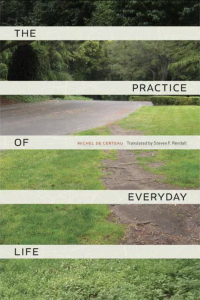
De Certeau’s exploration of two spatial descriptions, the maps and tour, and delimitation has expanded my perception of “spatial experience”. Maps and tours, one has a symbolic language of space while the other, is anthropological. Comparing to maps, tours would be more vivid as in a results of simply human experience and sentimental interaction with/ with in space. In a form of story telling, it has a function of sharing. Hence, there is a predominate nature, and “postulates” limits, possibilities and obligation. Stories can authorise and would given context and significants to the space and time when it take place, but it also needs space and time to take place. The reciprocality between both is crucial. Stories would also create “isolation and interplay of distinct spaces”, for example, laws and users’ experience would make either distinct or ambiguous boundaries, it can found in both maps and tours. However, it also has a fluid identity. Bridge brought out the dichotomy of delimitation, due to its ambiguity, the identity is unstable and often is identified as diabolic. How De Certeau perceive “bridge” as space and identity representation remains me of the last combat between Harry Potter and Voldemor, which is taken place on a bridge, perhaps the space itself is a useful metaphor of the instability and possibility arise from its ambiguous. As well as its ambition of connecting two end of space in opposite poles.
Somia An
3035660859
Yes, the reciprocity between story-telling / narration and space is a crucial point that de Certeau makes in emphasizing the importance of recognizing this as everyday acts that is a human characteristic. Fascinating analogy of the bridge as ambiguous space (delimits and connects) in the final combat between Potter and Voldermort. (Technically, the battle does not take place strictly on a bridge.)